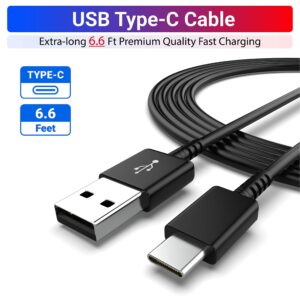Looking to learn how to properly charge a new lead acid battery for the first time? You’ve come to the right place! This informative article will guide you through the step-by-step process, ensuring that you start off on the right foot with your new battery. Whether you’re a beginner or have some experience, understanding the correct charging procedure is crucial for maximizing the battery’s lifespan and performance. So, let’s dive right in and discover how to properly charge a new lead acid battery for the first time.
How To Properly Charge A New Lead Acid Battery For The First Time
Lead acid batteries are widely used in various applications, from automotive to renewable energy systems. If you’ve recently acquired a new lead acid battery, it’s crucial to understand the proper charging procedure for optimal performance and longevity. In this guide, we’ll walk you through the steps to charge a new lead acid battery correctly, ensuring it operates at its full potential from the very beginning.
1. Safety Precautions
Before we delve into the charging process, it’s essential to prioritize safety. Lead acid batteries contain sulfuric acid, which is corrosive and can cause severe burns if mishandled. Here are some safety precautions to follow:
- Wear appropriate protective gear such as gloves, goggles, and a smock to shield yourself from acid exposure.
- Work in a well-ventilated area to prevent the accumulation of potentially harmful gases.
- Keep open flames and sparks far away from the battery to avoid the risk of explosion.
- Read and adhere to the manufacturer’s safety instructions and recommendations.
2. Understanding Battery Types
Lead acid batteries come in different types, and it’s important to know which one you have to determine the appropriate charging method. The most common types include:
Flooded Lead Acid Batteries
Flooded lead acid batteries are the traditional type, consisting of lead plates submerged in an electrolyte solution. These batteries require regular maintenance, including water level checks and occasional electrolyte replacement.
Sealed Lead Acid Batteries
Sealed lead acid batteries, also known as valve-regulated lead acid (VRLA) batteries, are maintenance-free. They come in two variations:
- AGM (Absorbent Glass Mat) Batteries: These batteries use a glass mat separator to hold the electrolyte, making them spill-proof and allowing for flexible mounting positions.
- Gel Batteries: Gel batteries utilize a gel-like electrolyte, offering excellent vibration resistance and deep discharge recovery.
Understanding the type of lead acid battery you have will help you apply the most suitable charging technique.
3. Initial Charging Process
When you first receive a new lead acid battery, it’s crucial to provide it with an initial charge before its first use. This process, also called “formation,” prepares the battery for optimum performance. Follow these steps for the initial charge:
- Read the Manufacturer’s Instructions: Carefully review the battery manufacturer’s guidelines and any specific recommendations they provide for the initial charging process.
- Inspect the Battery: Check for any physical damage or leaks that may have occurred during transportation. If you notice any issues, contact the manufacturer or retailer for assistance.
- Prepare the Charging Area: Choose a well-ventilated and temperature-controlled area for charging. Avoid using carpeted surfaces as they can accumulate static electricity.
- Connect the Charger: Connect the charger’s red (positive) clamp to the battery’s positive terminal and the black (negative) clamp to the negative terminal. Ensure a secure connection.
- Select the Charging Voltage and Current: Refer to the battery manufacturer’s instructions to determine the appropriate charging voltage and current. Adjust the charger settings accordingly.
- Initiate the Charging Process: Start the charging process by turning the charger on. Monitor the charging progress and observe any abnormal behavior such as excessive heating or bubbling.
- Monitor the Charging Process: Regularly check the battery temperature and charging current during the process. If the battery becomes excessively hot or the charging current significantly deviates from the recommended values, stop the charging and consult the manufacturer.
- Complete the Charging: Once the battery reaches its recommended voltage and the charging current drops to a specified level, the initial charge is complete. Disconnect the charger from the battery.
- Perform a Capacity Test (Optional): Some manufacturers recommend conducting a capacity test after the initial charge. This test assesses the battery’s ability to store and deliver energy efficiently.
4. Regular Charging Maintenance
After the initial charge, it’s important to maintain your lead acid battery properly to prolong its lifespan and prevent performance degradation. Here are some tips for regular charging maintenance:
Monitoring Battery Voltage
Regularly monitor your battery’s voltage to ensure it remains within the recommended range. Using a voltmeter, measure the battery voltage and compare it to the manufacturer’s specifications. If the voltage drops below the recommended level, it may indicate a need for charging.
Avoid Deep Discharges
Lead acid batteries are designed to operate within a specific voltage range. Avoid discharging the battery below the manufacturer’s recommended minimum voltage. Deep discharges can reduce battery capacity and lifespan.
Prevent Overcharging
Overcharging can damage the battery, leading to decreased performance and potentially dangerous situations. Use a charger with an automatic shut-off feature or a charge controller to prevent overcharging.
Charge in a Well-Ventilated Area
During the charging process, lead acid batteries release hydrogen gas, which is highly flammable. Always charge the battery in a well-ventilated area to prevent the accumulation of explosive gases.
Avoid Temperature Extremes
Extreme temperatures can negatively impact battery performance. Avoid charging a lead acid battery in excessively high or low temperatures. If possible, charge the battery at room temperature for optimal results.
5. Battery Reconditioning
Over time, lead acid batteries may experience reduced performance due to sulfation—a buildup of lead sulfate crystals on the battery plates. Battery reconditioning can help reverse sulfation and improve battery performance. Here’s a general process for battery reconditioning:
- Ensure Safety: Before starting the reconditioning process, wear appropriate safety gear and work in a well-ventilated area.
- Disconnect the Battery: Remove the battery from the device and disconnect it from any power source.
- Prepare the Reconditioning Solution: Prepare a reconditioning solution by mixing distilled water and Epsom salt (magnesium sulfate). The recommended ratio is approximately 1/4 cup of Epsom salt for every quart of water.
- Desulfation Process: Carefully pour the reconditioning solution into each battery cell, ensuring the plates are fully submerged. Allow the battery to sit for several hours or overnight to facilitate the desulfation process.
- Drain and Rinse: After the desulfation process, drain the reconditioning solution from the battery. Rinse the battery with distilled water to remove any remaining salt residue.
- Perform a Capacity Test: Optional: Conduct a capacity test to assess the battery’s performance after the reconditioning process. This will help determine if the battery has improved and if further reconditioning is needed.
Remember, battery reconditioning may not always restore a battery to its original condition. It’s important to consult the manufacturer’s guidelines and recommendations before attempting the reconditioning process.
By following these steps, you can properly charge your new lead acid battery for optimal performance and longevity. Remember to always prioritize safety and consult the manufacturer’s instructions for specific guidance. Regular maintenance and appropriate charging techniques will help ensure your battery operates at its best, providing reliable power for your applications.
Lead Acid Battery Charging Stages
Frequently Asked Questions
How long should I charge a new lead acid battery for the first time?
For the initial charge of a new lead acid battery, you should typically charge it for about 14 to 16 hours. This allows the battery to reach its maximum capacity and ensures optimal performance.
What kind of charger should I use to charge a new lead acid battery?
It is recommended to use a smart charger or a three-stage charger specifically designed for lead acid batteries. These chargers provide a controlled and regulated charge, preventing overcharging and maximizing battery life.
Should I fully discharge a new lead acid battery before charging it for the first time?
No, it is not necessary to fully discharge a new lead acid battery before the first charge. In fact, it is generally better to avoid deep discharges as they can reduce the lifespan of the battery. Instead, charge the battery as soon as possible after purchase.
Can I use a car battery charger to charge a new lead acid battery?
Yes, you can use a car battery charger to charge a new lead acid battery. However, make sure to select the appropriate charging mode if your charger offers different settings. Additionally, keep an eye on the charging process to avoid overcharging the battery.
Should I disconnect the battery from the vehicle while charging it for the first time?
It is generally not necessary to disconnect the battery from the vehicle while charging it for the first time. However, if you prefer to do so or if your charger’s instructions recommend it, you can disconnect the battery to ensure a more accurate and controlled charging process.
Can I use a trickle charger to charge a new lead acid battery?
Yes, you can use a trickle charger to charge a new lead acid battery. Trickle chargers provide a slow and steady charge to maintain the battery’s charge level over extended periods. However, for the first charge, it is often recommended to use a charger that can provide a higher charging current to fully activate the battery’s capacity.
Final Thoughts
Properly charging a new lead acid battery for the first time is essential for its longevity and performance. To start, ensure the battery is fully charged before initial use. During the charge, monitor the voltage and current levels to prevent overcharging or undercharging. Use a compatible charger and follow the manufacturer’s instructions carefully. It’s also important to allow the battery to cool down after charging before using it. By following these steps, you can ensure the optimal function and lifespan of your new lead acid battery. How To Properly Charge A New Lead Acid Battery For The First Time.



